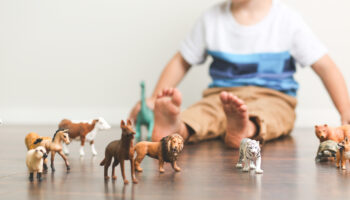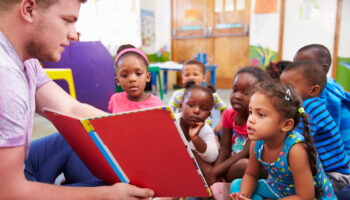By Lisa Mulliken
Barney the purple dinosaur, Wilson the volleyball, Snuffleupagus (my favorite!) and the Wild Things. What do all of these have in common? They are all imaginary friends. Imaginary friends can be invisible or a personified object, such as a doll or even a child’s fingers.
As a toddler my granddaughter had a fear of bugs, especially spiders. As an almost 4-year-old, she has mostly overcome her fear but she recently created her own imaginary friends, her hand spiders. They lived in her pockets and showed up every so often to talk and play with her. During the time these imaginary friends showed up, many changes were occurring in her life. She and her mom (and dog) moved out of our house and into their own small, but cozy, apartment. She also started at a new childcare center where she didn’t know anyone and had to wear a mask. Her spiders were her constant companions during these transitions and went to school with her every day. She would often talk about how they were happy, sad or mad. As she started to adjust to her new house and school, her spiders appeared less and less and she talked more and more about her new friends at school. One day, we were taking a walk and stopped to look at some apple trees. Her spiders appeared and crawled on a tree. I commented that it had been a long time since I saw her spider friends and she responded that it was because she likes her school and friends so they just stay in her pockets now.
Parents and caregivers can find out a lot about a child by these extensions of make believe, as I did with my granddaughter’s spiders. The appearance of an imaginary companion is usually a positive sign of a child’s development and can be a creative and beneficial part of childhood. These best buds can help children practice and increase language and social and emotional skills, boost imagination and creativity, explore behaviors, and, as with my granddaughter, deal with changes or fears and express feelings.
Research shows that imaginary friends commonly occur between the ages of 3-5 and that first born children, especially girls, are more likely to have one. They may have unusual traits (such as living in pockets!) and usually disappear as children reach elementary school. See below for some children’s books with imaginary companions.
Where the Wild Things Are by Maurice Sendak
Calvin and Hobbes by Bill Watterson
Skippyjon Jones by Judy Schachner
We Forgot Brock by Carter Goodrich




